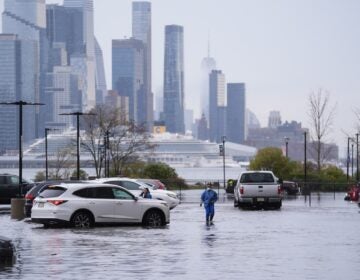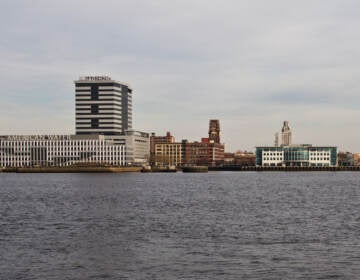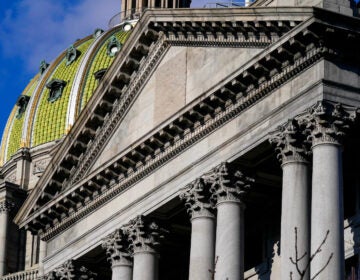Why fall foliage may not be as bright in the Philly region this year
Cooler temperatures and a late season drought caused some trees to lose their leaves early, while also affecting the quality of fall colors.
Listen 1:03
A flowering dogwood’s leaves turning in early October of 2025 at the Pennypack Ecological Trust Preserve in Montgomery County, Pa. (Kimberly Paynter/WHYY)
This story is part of the WHYY News Climate Desk, bringing you news and solutions for our changing region.
From the Poconos to the Jersey Shore to the mouth of the Delaware Bay, what do you want to know about climate change? What would you like us to cover? Get in touch.
As the season begins to turn, many in the Philadelphia region are excited for the crisp air, the crunching of leaves beneath their feet and the autumn hues of yellow, orange and red on the trees.
Arborists say the leaves in the tri-state area are turning early this year, but fall foliage may appear more dull than normal.
“It might be a little less spectacular than some years,” said Vince Marrocco, director of horticulture at Morris Arboretum & Gardens at the University of Pennsylvania.
Cooler temperatures and a late season drought in the region have caused some trees to become stressed and lose their leaves early, while also affecting the quality of fall colors.
Trees rely on bright sunlight, cool temperatures and enough rain to produce colorful leaves in the fall, but the reduced rainfall this year has left some trees thirsty.
“Unless we start to get some rain, I’m not convinced that we’re going to have a real brilliant fall,” said arborist Jason Parker of the Davey Tree Company. “The trees are shutting down earlier because they don’t have the moisture to keep going.”
These conditions can make certain trees more susceptible to insect and disease problems, Parker said. However, watering and mulching trees during dry spells can help trees to retain moisture and improve their health, as well as fall color, he said.
The drought stress may not necessarily trigger an early leaf change, but rather an extended period of time to view the fall foliage, said Brian Wolyniak, an urban and community forest educator at Penn State University.
The appearance of the trees in the region will depend heavily on how much rainfall a given area has received, he said, as well as how drought-tolerant each species of tree is.
Rain in late September helped to slow the color transition for many forests in Pennsylvania, for instance, which had been facing drought stress, according to the state’s Department of Conservation and Natural Resources.
“The rainfall and warm nighttime temperatures likely stabilized the fall color timeline, which had been significantly advanced,” the agency said in a report.
However, the expected cooldown over the weekend should stimulate noticeable color changes across the state, according to DCNR.
The Clinton County service forester in Central Pennsylvania called this year a “strange” time for foliage, adding that the late summer drought caused many of the maples and birches in the Bucktail Natural Area to prematurely drop their leaves, and that the most colorful species have “quickly passed peak.”
Foresters are currently reporting the most spectacular autumn foliage in northern parts of Pennsylvania. Meanwhile, the William Penn State Forest in southeastern Pennsylvania is starting to see early changes to fall color among its red maple, sycamore and black gum.
“It may be a little bit more dull than what we’ve seen in other years, but despite the conditions, we’ll still be able to have some of that color and enjoy it, maybe just not the brightest version of it,” said Penn State’s Wolyniak. “And maybe the silver lining is we have maybe a little bit more extended time to view it because of these drier conditions.”
WHYY is your source for fact-based, in-depth journalism and information. As a nonprofit organization, we rely on financial support from readers like you. Please give today.






